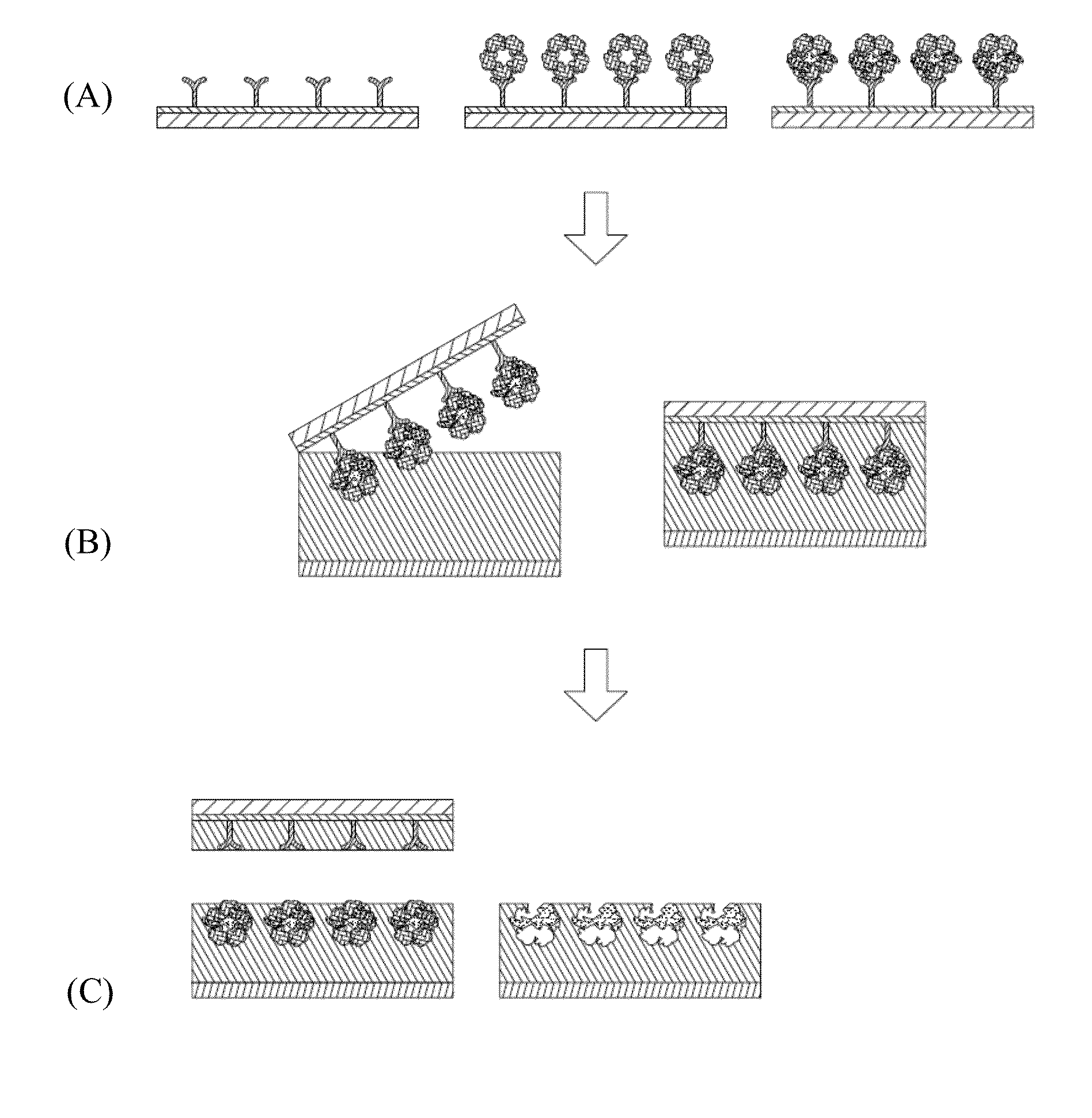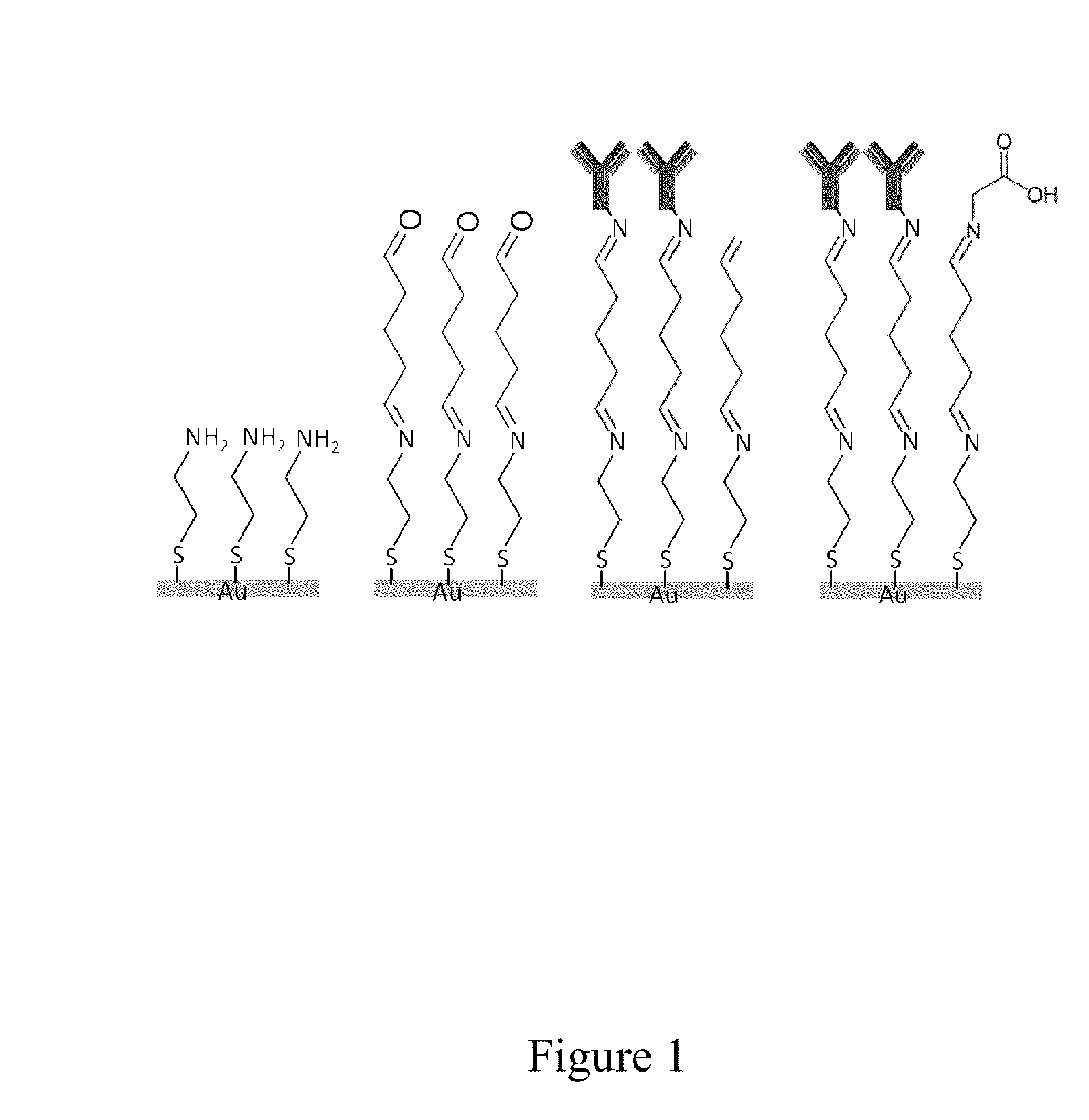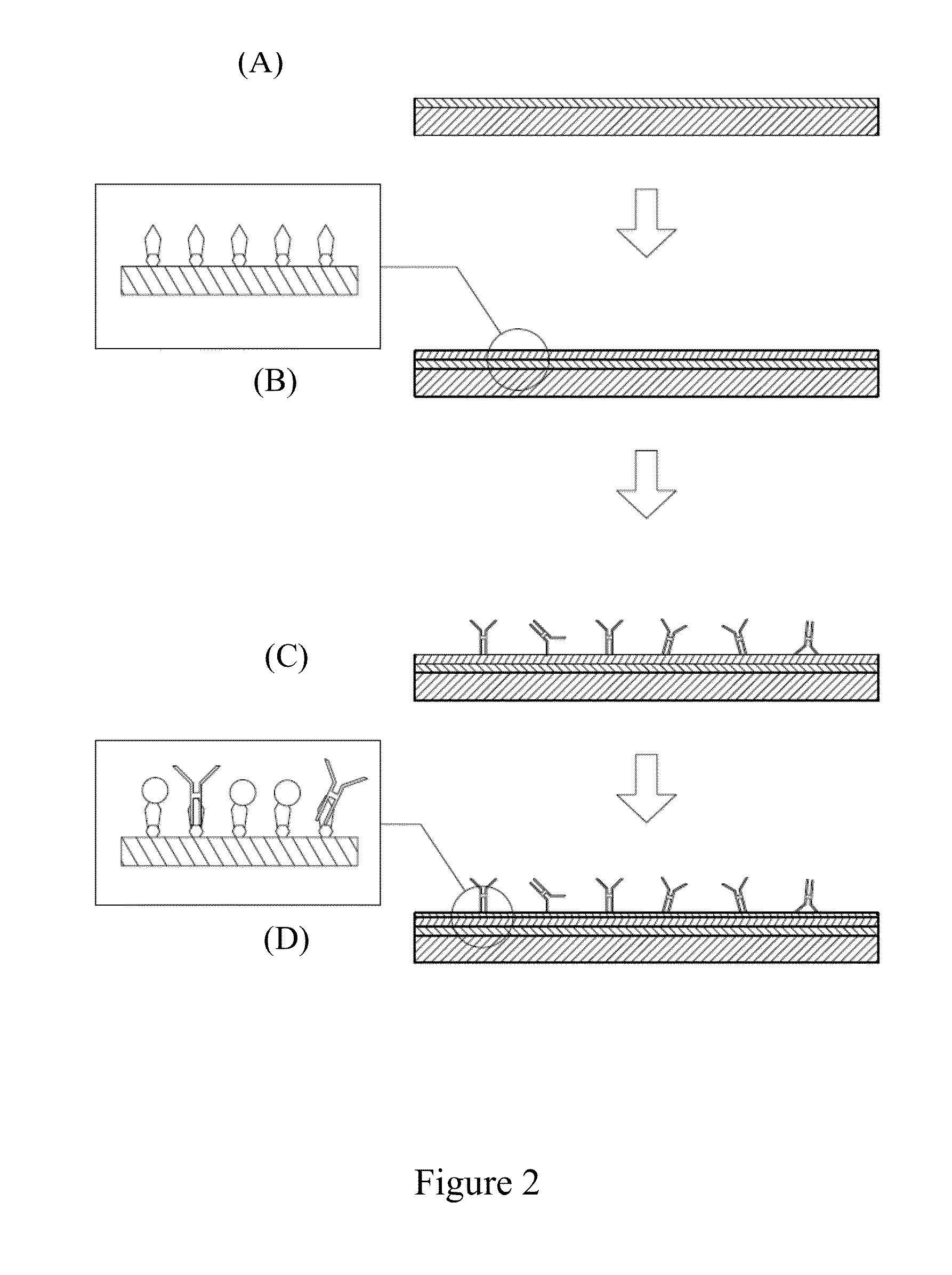C-reactive protein imprinted polymer film and microchip system utilizing the same
a technology of imprinting and c-reactive proteins, applied in the field of protein imprinting polymer film, can solve the problems of low cure rate, difficult diagnosis, and difficult diagnosis
- Summary
- Abstract
- Description
- Claims
- Application Information
AI Technical Summary
Benefits of technology
Problems solved by technology
Method used
Image
Examples
example 1
Preparation of C-Reactive Protein Imprinted Polymer Film
1-1 Imprinting Template
[0042]The process of the present invention is divided into two main parts: the imprinting template and protein imprinted polymer film. One embodiment of the present invention uses a four-inch glass wafer as the imprinting template; the glass wafer surface is vacuum coated with a 400 nm gold layer and a 25 nm adhesion layer (Ti) by using an E-gun.
[0043]The surface of the imprinting template is modified by cysteamine-glutaraldehyde method; as shown in FIG. 1, the first modification agent is cysteamine represented by the formula (1):
[0044]By using the electron pair of the sulfur bond, located at one end of the cysteamine, with the empty orbit of the outer electron shell of a gold atom, a stable coordination complex is formed. This gold-sulfur bond (polar covalent bond) is as a coordinate covalent bond. The reaction is shown by the following chemical equation:
R—SH+Au→R—S—Au+1 / 2H2
[0045]Even though gold is ver...
example 2
Measure the Surface of the CRP Imprinted Film by AFM
[0065]Atomic force microscope (AFM) uses a micro-cantilever which has a small tip on its front-end, by sensing its vibration, AFM can monitor interaction forces with the sample, such as mechanical contact force, Van der Waals forces, chemical bonds, electrostatic force, and magnetic force etc. The AFM uses laser to mark the front end of the micro-cantilever, and uses photodiode to detect its refection. When the micro-cantilever shifts, the refection shifts also, and is detected by the photodiode. By the shift distance, the strength of the interaction force between the sample and the tip can be determined. Therefore, AFM can be measured a conductor or a non-conductor samples, and the accuracy can achieved atom scale.
[0066]There are four sample films: NIP (non-imprinted polymer), AIP (antibody imprinted polymer) of the present invention, PIP with unified orientation and distribution (protein imprinted of polymer) of the present inven...
example 3
C-Reactive Protein Microchip System
[0082]To measure the concentration of the C-reactive protein in a sample, high-performance liquid chromatography (HPLC) method is often used in academic researches. The concentration of the sample must be above 100 μg / ml to accurately analyze its composition in actual practices. However, the concentration of the C-reactive protein in a normal human body is bellow 8 μg / ml, therefore the application of the HPLC method in a clinical environment is difficult and impractical.
[0083]In clinical research, enzyme-linked immunoassay (ELISA) is a method to measure the concentration of the C-reactive protein in a sample. The sample need to be serial diluted to a final concentration bellow 1000 pg / ml. The concentration of a clinical sample is about 1-15 μg / ml, which requires to be diluted to one thousandth of its original concentration. This process is highly vulnerable due to human negligence or contamination.
[0084]The C-reactive protein microchip system is sh...
PUM
 Login to View More
Login to View More Abstract
Description
Claims
Application Information
 Login to View More
Login to View More - R&D
- Intellectual Property
- Life Sciences
- Materials
- Tech Scout
- Unparalleled Data Quality
- Higher Quality Content
- 60% Fewer Hallucinations
Browse by: Latest US Patents, China's latest patents, Technical Efficacy Thesaurus, Application Domain, Technology Topic, Popular Technical Reports.
© 2025 PatSnap. All rights reserved.Legal|Privacy policy|Modern Slavery Act Transparency Statement|Sitemap|About US| Contact US: help@patsnap.com



